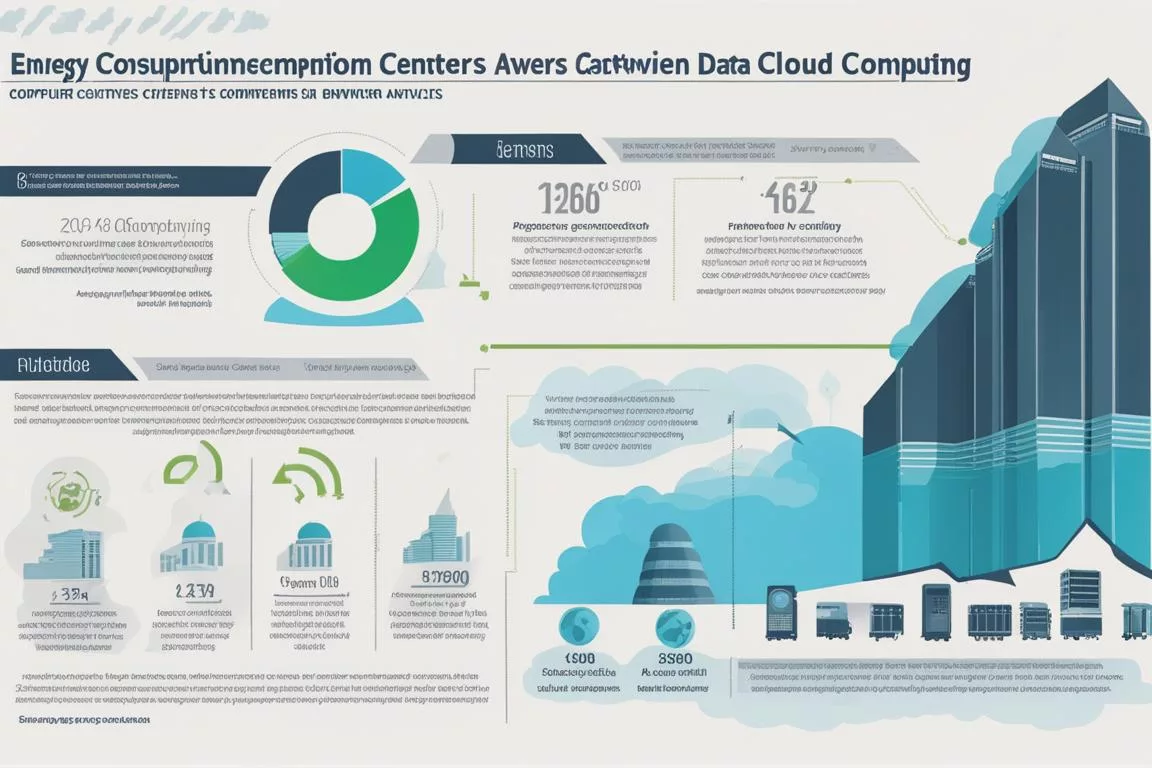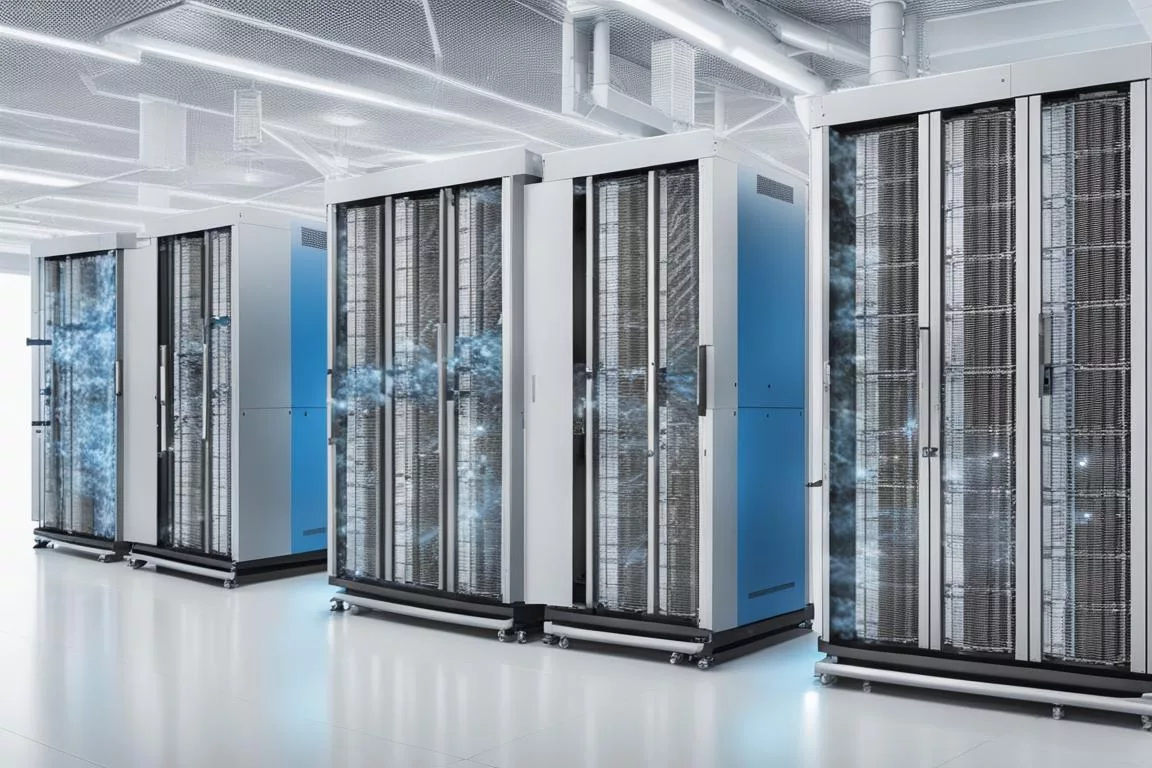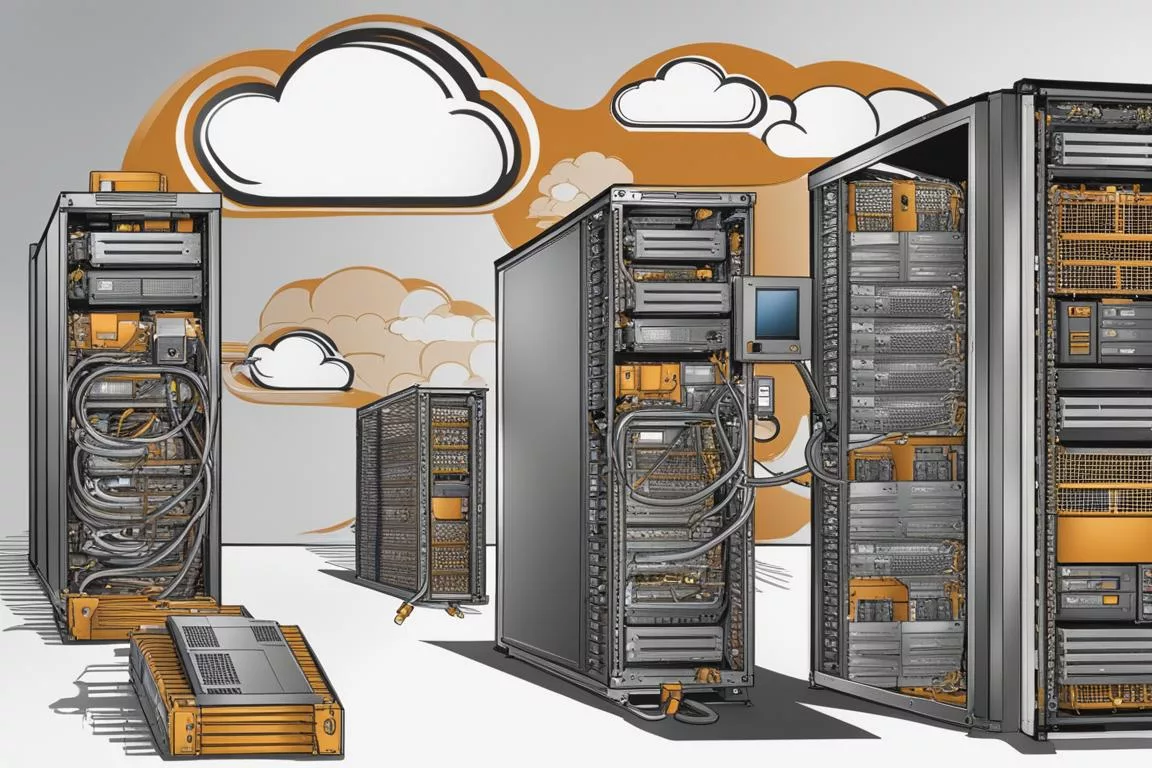Cloud computing, often heralded for its efficiency and scalability, also holds the potential to be a significant ally in the quest for sustainability. As we dive into the 24 ways cloud computing can help reduce environmental impact, it’s crucial to recognize this technology not just as a business tool, but as a pivotal factor in fostering a more sustainable future.
Learn about Cloud Computing and Sustainability
- Cloud computing helps reduce energy consumption, waste, water consumption, carbon emissions, and the need for travel.
- It also reduces the need for paper, hardware, data centers, air conditioning, backup generators, and various waste disposal methods.
- Cloud computing contributes significantly to environmental sustainability by minimizing resource-intensive practices.
1. Cloud Computing Can Help Reduce Energy Consumption
Traditional on-premises data centers are notorious for their high energy consumption, primarily due to the need to power and cool a vast array of servers. Cloud computing, with its ability to dynamically allocate resources, offers a stark contrast. By leveraging shared resources in a cloud environment, businesses can achieve the same computational outcomes while consuming significantly less energy. This efficiency is further amplified by the cloud providers’ ongoing efforts to optimize data center operations and investment in renewable energy sources.

Insider Tip: Transitioning to cloud services can result in energy savings of up to 87%, according to a study by the Lawrence Berkeley National Laboratory.
2. Cloud Computing Can Help Reduce Waste
The lifecycle of hardware in a traditional IT environment is fraught with waste. From the moment a server, switch, or storage device is manufactured, through its shipping, usage, and eventual disposal, each step contributes to environmental degradation. Cloud computing, by centralizing resources and maximizing their utilization, significantly cuts down on the amount of hardware required. This not only reduces the waste generated but also diminishes the demand for raw materials needed for production.
Insider Tip: Opt for cloud providers that have a robust policy for recycling and disposing of hardware to further minimize your environmental impact.
3. Cloud Computing Can Help Reduce Water Consumption
Water usage in data centers, primarily for cooling purposes, is another environmental concern. Cloud providers have been at the forefront of adopting advanced cooling technologies that significantly reduce water usage. Techniques such as air-side economization use outside air to cool data centers, drastically cutting down on water consumption.

Insider Tip: When selecting a cloud provider, inquire about their cooling technologies and water usage policies.
4. Cloud Computing Can Help Reduce Carbon Emissions
Carbon footprint reduction is perhaps the most significant environmental benefit of cloud computing. By optimizing resource usage and investing in renewable energy, cloud providers can operate with a lower carbon footprint compared to traditional data centers. This benefit extends to businesses that migrate to the cloud, contributing to their sustainability goals.
Insider Tip: Look for cloud providers that are committed to achieving carbon neutrality to maximize your impact.
5. Cloud Computing Can Help Reduce the Need for Travel
Remote work capabilities powered by cloud computing have dramatically reduced the need for business travel, cutting down on transportation-related emissions. Cloud-based collaboration tools enable teams to work together seamlessly, no matter where they’re located, reducing the carbon footprint associated with commuting and business trips.

Insider Tip: Leverage cloud-based video conferencing and collaboration tools to minimize the environmental impact of travel.
6. Cloud Computing Can Help Reduce the Need for Paper
The move to cloud-based document management and storage solutions has significantly reduced the need for paper, contributing to a decrease in deforestation and pollution from paper manufacturing. Digital documents, easily shareable and storable in the cloud, also enhance efficiency and accessibility.

Insider Tip: Utilize cloud-based document management systems to not only reduce paper usage but also improve document security.
7. Cloud Computing Can Help Reduce the Need for Hardware
The consolidation of IT resources in the cloud means fewer servers, storage devices, and networking equipment are needed on-site. This reduction in physical hardware not only decreases energy consumption and waste but also lessens the demand for raw materials used in manufacturing these products.
Insider Tip: Conduct a thorough assessment of your current IT infrastructure to identify opportunities for consolidation and migration to the cloud.
8. Cloud Computing Can Help Reduce the Need for Data Centers
By migrating to cloud services, businesses can significantly reduce or even eliminate their need for private data centers. This transition not only lowers the environmental impact associated with maintaining these facilities but also allows companies to reallocate resources towards more sustainable initiatives.
Insider Tip: When planning your cloud migration, consider the environmental benefits of shutting down or repurposing existing data center facilities.
9. Cloud Computing Can Help Reduce the Need for Air Conditioning
The advanced cooling technologies employed by cloud providers render traditional, energy-intensive air conditioning systems obsolete. By using outside air and other innovative cooling methods, cloud data centers maintain optimal operating temperatures with a fraction of the environmental impact.
Insider Tip: Inquire about your cloud provider’s cooling methods to ensure they align with your environmental values.
10. Cloud Computing Can Help Reduce the Need for Backup Generators
Cloud computing’s inherent redundancy and disaster recovery capabilities reduce the need for diesel-powered backup generators, which are a common feature in traditional data centers. This shift not only decreases emissions but also lessens the dependency on fossil fuels.

Insider Tip: Evaluate cloud providers based on their disaster recovery solutions and the environmental footprint of their backup systems.
11. Cloud Computing Can Help Reduce the Need for Fire Suppression Systems
The concentration of IT resources in highly efficient cloud data centers can lead to a reduced need for extensive fire suppression systems, which often rely on environmentally harmful chemicals. Cloud providers typically employ state-of-the-art fire protection methods that minimize environmental impact.
Insider Tip: Ensure that your cloud provider’s fire suppression techniques are environmentally friendly.
12. Cloud Computing Can Help Reduce the Need for Raised Floors
Raised floors, a staple in traditional data centers for cable management and air circulation, are less necessary in modern cloud facilities. This reduction in construction materials and the associated environmental impact is another benefit of migrating to the cloud.
Insider Tip: Consider the architectural and environmental efficiency of cloud data centers when choosing a provider.
13. Cloud Computing Can Help Reduce the Need for Physical Security
The shift to cloud computing diminishes the need for extensive physical security measures at individual business locations. Cloud providers invest heavily in securing their facilities, enabling businesses to rely on their expertise and infrastructure, thereby reducing the environmental impact of security operations.
Insider Tip: Leverage the advanced security capabilities of cloud providers to enhance protection while minimizing your environmental footprint.
14. Cloud Computing Can Help Reduce the Need for Lighting
The reduced need for physical infrastructure also translates to lower requirements for lighting, further decreasing energy consumption. Cloud data centers, designed for efficiency, often utilize natural light and energy-efficient LED lighting, contributing to their lower environmental impact.
Insider Tip: Explore how your cloud provider optimizes lighting within their data centers as part of their sustainability efforts.
15. Cloud Computing Can Help Reduce the Need for E-Waste Recycling
While e-waste recycling is crucial, reducing the generation of electronic waste in the first place is even more beneficial. Cloud computing’s efficient use of shared resources significantly cuts down on the amount of hardware that eventually becomes e-waste.
Insider Tip: Prioritize cloud solutions that offer the greatest efficiency and longest lifespan for their hardware to minimize e-waste.
16. Cloud Computing Can Help Reduce the Need for Hazardous Waste Disposal
The hazardous waste associated with IT operations, from batteries to electronic components, can be significantly reduced through cloud computing. By centralizing resources and optimizing their use, cloud providers minimize the generation of hazardous waste, making a positive impact on the environment.
Insider Tip: Investigate the waste management practices of your cloud provider to ensure they prioritize environmental stewardship.
17. Cloud Computing Can Help Reduce the Need for Hazardous Waste Transportation
With fewer physical IT assets to manage, businesses can significantly reduce the need for transportation associated with hazardous waste disposal. This not only cuts down on emissions but also decreases the risk of environmental contamination during transport.
Insider Tip: Consider the full lifecycle impact of your IT infrastructure, including the transportation of waste, when evaluating cloud computing benefits.
18. Cloud Computing Can Help Reduce the Need for Hazardous Waste Storage
The reduction in hazardous materials required for cloud computing operations also means less need for their storage. This decreases the potential for environmental harm due to leaks or improper handling of hazardous waste.
Insider Tip: Ensure that your cloud provider adheres to the highest standards for the storage and handling of any hazardous materials.
19. Cloud Computing Can Help Reduce the Need for Hazardous Waste Treatment
By minimizing the generation of hazardous waste, cloud computing also reduces the need for its treatment. This directly contributes to a lower environmental impact, as treatment processes themselves can be resource-intensive and polluting.
Insider Tip: Assess the environmental policies of cloud providers, particularly their waste treatment and reduction strategies.
20. Cloud Computing Can Help Reduce the Need for Hazardous Waste Incineration
Incineration, a common method of disposing of hazardous waste, releases harmful pollutants into the atmosphere. The decreased reliance on physical infrastructure with cloud computing means less hazardous waste requiring incineration, thus reducing air pollution.
Insider Tip: Advocate for cloud computing solutions that prioritize the reduction of hazardous waste and its incineration.
21. Cloud Computing Can Help Reduce the Need for Hazardous Waste Landfills
Landfilling hazardous waste poses significant environmental risks, from groundwater contamination to soil degradation. Cloud computing’s efficient use of resources lessens the amount of waste generated, thereby reducing the need for landfilling.
Insider Tip: Support cloud providers that demonstrate a commitment to minimizing waste and avoiding landfilling wherever possible.
22. Cloud Computing Can Help Reduce the Need for Hazardous Waste Exportation
The exportation of hazardous waste, often to countries with less stringent environmental regulations, is a concerning practice. By reducing the overall generation of hazardous waste, cloud computing can play a role in mitigating this issue.
Insider Tip: Engage with cloud providers that are transparent about their waste management practices, including the avoidance of hazardous waste exportation.
23. Cloud Computing Can Help Reduce the Need for Hazardous Waste Importation
Similarly, the importation of hazardous waste for processing or disposal is reduced when businesses rely on cloud computing. This not only benefits the importing countries but also fosters a more sustainable approach to managing IT resources globally.
Insider Tip: Choose cloud solutions that emphasize resource efficiency and minimal waste generation to reduce the reliance on hazardous waste importation.
24. Cloud Computing Can Help Reduce the Need for Hazardous Waste Disposal in Space
While the disposal of hazardous waste in space is more of a theoretical concern at present, the principle remains that minimizing waste on Earth is paramount. Cloud computing, by reducing the need for physical IT assets and associated waste, contributes to this goal.
Insider Tip: Support cloud computing initiatives that prioritize sustainability and the minimization of all forms of waste, including those that might one day be considered for space disposal.
Conclusion
The environmental benefits of cloud computing are vast and varied, touching on aspects of energy consumption, waste reduction, and resource efficiency. As businesses and individuals alike strive for sustainability, the adoption of cloud computing stands out as a practical and impactful choice. By understanding and leveraging these 24 ways in which cloud computing can help reduce environmental impact, we can all contribute to a healthier planet. Let’s embrace cloud computing not just for its technological advantages, but for its potential to drive us towards a more sustainable future.


